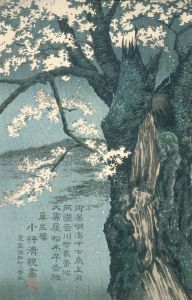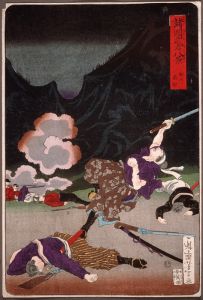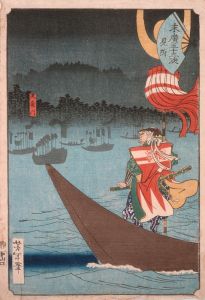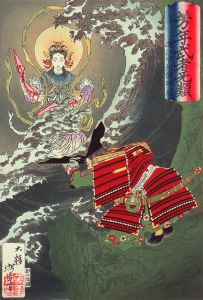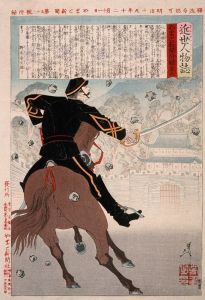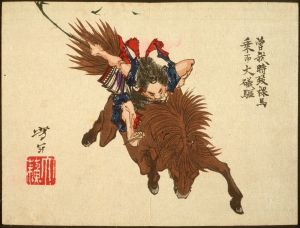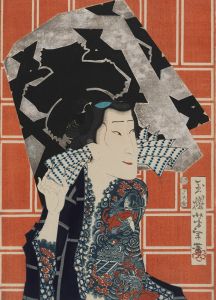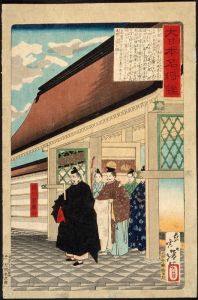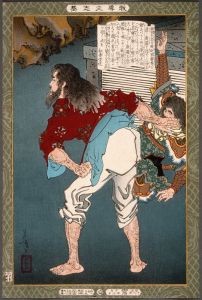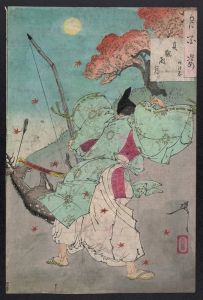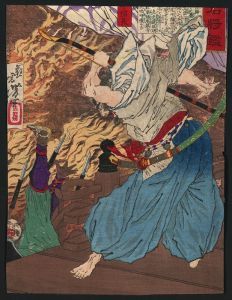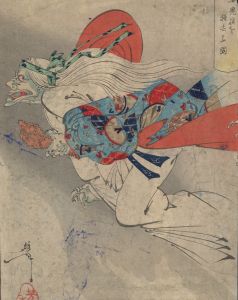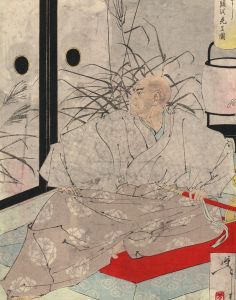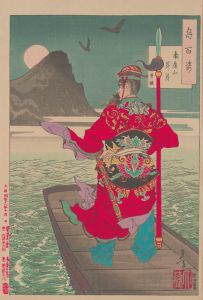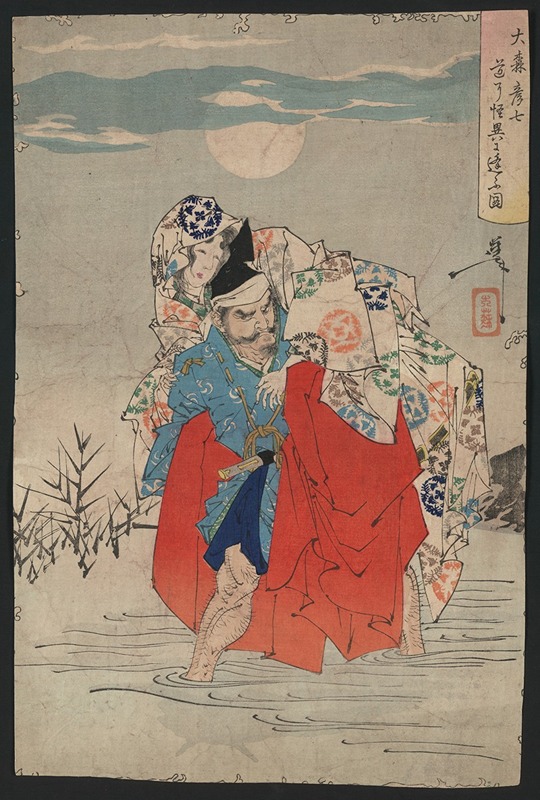
Omori Hikoshichi
A hand-painted replica of Tsukioka Yoshitoshi’s masterpiece Omori Hikoshichi, meticulously crafted by professional artists to capture the true essence of the original. Each piece is created with museum-quality canvas and rare mineral pigments, carefully painted by experienced artists with delicate brushstrokes and rich, layered colors to perfectly recreate the texture of the original artwork. Unlike machine-printed reproductions, this hand-painted version brings the painting to life, infused with the artist’s emotions and skill in every stroke. Whether for personal collection or home decoration, it instantly elevates the artistic atmosphere of any space.
"Omori Hikoshichi" is a woodblock print created by the renowned Japanese artist Tsukioka Yoshitoshi. Yoshitoshi, who lived from 1839 to 1892, is celebrated for his innovative approach to the traditional ukiyo-e art form, which flourished during the Edo period in Japan. His works often depicted historical scenes, kabuki actors, beautiful women, and supernatural themes, reflecting both the cultural heritage and the societal changes of his time.
The print "Omori Hikoshichi" is part of Yoshitoshi's series "New Forms of Thirty-Six Ghosts" (Shinkei Sanjūrokkaisen), which was published between 1889 and 1892. This series is notable for its exploration of ghostly and supernatural themes, drawing inspiration from Japanese folklore, literature, and history. Yoshitoshi's interest in such themes is evident throughout his career, and this series is considered one of his masterpieces, showcasing his mature style and technical prowess.
The subject of the print, Omori Hikoshichi, is a legendary figure in Japanese folklore. He is often depicted as a samurai who encounters a ghostly apparition. The story typically involves Hikoshichi being approached by a beautiful woman who asks for his help to cross a river. As he carries her across, he notices her reflection in the water, revealing her true form as a demon or ghost. This moment of revelation is a common motif in Japanese ghost stories, emphasizing themes of deception, perception, and the supernatural.
Yoshitoshi's depiction of Omori Hikoshichi captures the dramatic tension of this moment. His use of color, line, and composition highlights the eerie atmosphere and the psychological complexity of the scene. The print exemplifies Yoshitoshi's ability to blend traditional Japanese aesthetics with a modern sensibility, making his work accessible and appealing to both contemporary and future audiences.
Yoshitoshi's career spanned a period of significant change in Japan, as the country transitioned from the Edo period to the Meiji era. This era was marked by rapid modernization and Western influence, which affected all aspects of Japanese life, including the arts. Despite these changes, Yoshitoshi remained committed to the ukiyo-e tradition, while also incorporating new techniques and ideas. His work is often seen as a bridge between the old and the new, preserving the cultural heritage of Japan while also embracing innovation.
"Omori Hikoshichi" and the "New Forms of Thirty-Six Ghosts" series are significant not only for their artistic merit but also for their cultural and historical value. They provide insight into the Japanese imagination and the enduring appeal of ghost stories and folklore. Yoshitoshi's prints continue to be studied and admired for their technical skill, narrative depth, and emotional impact, securing his legacy as one of the last great masters of the ukiyo-e tradition.





